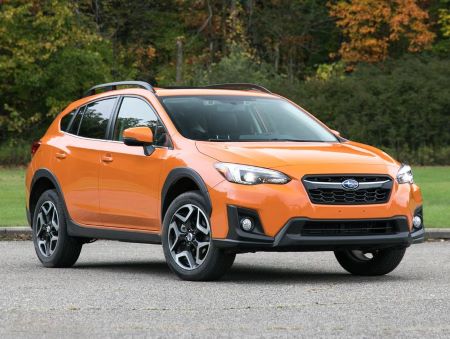
Determining wholesale value, also known as trade-in value, is not as straight forward as one might wish ... even for Dealers. But by understanding the various factors involved, consumers will be in a much better position to save money.
What IS A Car's Wholesale Price, Anyway?
Well, it may not be what you think. The average profit made per used car sold in the U.S. is right around $1,500. Surprised? I think some people think car markups are like other retail items sold at two or three times cost. It would be nice for the dealers if this was true, but it's not.
I'm not saying that ALL cars are sold with a $1,500 profit. I'm aware of some Dealers that tack on $4,000 or more and are successful selling to less informed buyers. But the "average" profit is right around $1,500.
Special Update: Buy ANY New Car At The Lowest Possible Price
What exactly is the wholesale price of a particular vehicle? The simple answer is that its wholesale price is its trade-in value. And how is this price determined? Well, this is where things start getting a little complicated.
The basic answer is that trade-in value is actually the price a Dealer pays for the same vehicle at any given moment in time at a Dealer-Only car auction.
In other words, when you bring a car to a Dealer to trade-in, the Dealer is going to get online to check the prices actually paid for that particular vehicle during the last few days at the Dealer auctions. He won't pay more than he could buy one for at the auction (unless he has overcharged you for the vehicle you are buying.
Dealers get these auction prices at sites such as Manheim (the largest Dealer Auction company and the one we used the most often). Only Dealer members have access to their sales data. They group their model data into classifications such as "above", "average" and "below", depending on the condition their own inspectors have assigned to each and every vehicle going through the auction.
This helps Dealers matchup prices with the trade-in they are evaluating. Obviously, this can be a bit subjective and can be one of the reasons different Dealers make different trade-in offers for the same vehicle (price gouging by a Dealer is another reason, of course ... giving you a good price on a car purchase and a bad one on the trade).
Dealer lingo for this number is the "MMR" (Manheim Market Report). Actually, here's a video that shows what a typical MMR looks like.
You May Also Like:
Easily Negotiate The Lowest Price
Do This For The Best Trade-In Price
How To Get The Lowest Rate Car Loan
Now, as soon as you throw in "subjective" issues in pricing, you also throw in "risk" factors for both the Dealer and the car owner. Has the Dealer's assessment of the vehicle been accurate or will he find out something about the vehicle later that will determine he overpaid for the vehicle? He's worried about this so he'll likely offer less for the trade just to add a margin of safety.
The person trading the car also has risk. Again. has the Dealer valued the car properly? Has the car been classified in the correct category (i.e. above, average, etc.)? Does the vehicle actually lay somewhere between two categories? You can see how things begin to cloud up. It's just not a black and white issue.
So, What Is A Consumer To Do About Car Values?
Although unable to give you the precise answer you're looking for, use valuation services provided by such sites as Kelley Blue Book and NADAGuides.
There's also one that might be a bit more accurate because the inputs will include either your license plate or VIN# followed by many simple, but specific, yes/no questions. You can get it at Edmund's Trade-In Quotes.
Actually, I think it's a good idea to know the value of your asset whether you are in the market or not. It's just a good idea to know these things.
The point is that you're going to get different numbers from the different services for the exact same car! Sometimes significant differences.
This is because, while they all say they check both the prices of vehicles sold by Dealers as well as at the auctions, each has their own unique algorithm on how these numbers should be extrapolated. And they can get really foggy. Here's what Kelley Blue Book says, for example:
"Used values are determined by a proprietary editorial process. This process starts with a thorough analysis of all collected data along with historical trends, current economic conditions, industry developments, seasonality and location."
In other words, there's other factors besides pure prices that influence their respective values. When you see words like "editorial", "trends", "conditions", "developments", etc., you're again seeing subjectivity being introduced into the formula. And, do you remember the product of subjectivity? That's right ... Risk ... risk that the number is off the mark.
And indeed this is often the case. I've seen values of some BMWs, for example, that are $3,000 or $4,000 too high. I'll check on AutoTrader and see 80% of the vehicles listed below KBB's Retail value and many at or below trade-in.
On the other hand, there are individual vehicles that are significantly undervalued. Take a hard-to-find Mazda3 s Hatchback, for example. This has been a car that many people have wanted but had been in short supply. KBB has been quite low on their valuations at times. Something is being missed.
I don't mean to be picking on KBB. In fact, I strongly recommend that car buyers check the prices from each of these services. The more information you have, the more informed buyer you become. And by perhaps using an aggregate of these values, you'll get a better idea of true value. Notice that I said "idea", not actually a "precise" value. Very useful none-the-less.
Yet Another Wholesale Value Complication
Wholesale prices can also go up. You wouldn't think so but it happens.
For example, during a strong car market in 2021 and 2022, we saw used car prices actually rising. There were a lot of car buyers and Dealers who found themselves short on inventory due to the Pandemic. They bid aggressively at the auctions to fill their needs which drove up prices. And, of course, these prices were passed along at the lot. This wasn't just for a week of two, but only began to temper in 2023.
Here we had depreciating assets actually rising in value and the valuation services were unable to accurately reflect this increase for some time. We've also seen this happen in other times when we were coming out of a recession.
In the Spring and Summer of 2006 with gas prices in the $3.00 per gallon range, and even with a used car market that was fairly weak overall, we saw prices rise for good gas mileage vehicles ... and especially for diesels. These vehicles became scarce at the auctions and prices rose. And again we found valuation services struggling to account for these price increases.
And it happened again during the economic crisis of 2009. Car buyers turned away from new cars because of the economic uncertainties and many bought used cars instead. Dealers then beefed up their used car inventories to meet this demand, which pushed prices higher for nearly the entire year.
Wholesale Value Recommendations:
- Get a trade-in value from Edmunds Trade-In Quotes to get a fairly good idea of a vehicle's wholesale price.
- Ask Dealers for a printout of the MMR (or whatever they call it at the auctions used by the Dealer). Although it's not perfect, it's another fairly strong indicator of value. Some will give it to you. Some will not.
- Visit sites such as CarsDirect.com, AutoTrader, and Cars.com and check the Dealer prices for your vehicle. Try to determine an average price for vehicles with similar features and mileage. Then deduct approximately $2,000 from that price (the $1,500 average profit and perhaps $500 for the Dealer's inspection, reconditioning and advertising costs).
For more expensive vehicles, deduct more (for example, I'd estimate $3,000 for vehicles over $40,000 and $4,000 for vehicles over $60,000).
- Get values from Kelley Blue Book, NADAGuides and Edmunds.com. See if there is a consensus. Or, average the prices. Discuss these valuations with the Dealer if his offer looks out of whack. How can he explain his low offer? Make the Dealer make sense.
#1 Used Car Buying Tip:
Get Dealers To Compete For your Business: When you are searching vehicles to possibly purchase, the following is the absolute best way to get the lowest price, and it is extremely easy and stress-free.
Just go to a national car listing site, (I happen to prefer CarsDirect.com for their massive dealer participation and ease of use, although others will get the job done as well) and find several listed vehicles that you may be interested in.
Then write something like the following in the "Check Availability" box or "Contact Dealer" box or whatever the site you are using uses.
"Hello, I've contacted several dealers about cars I am interested in and am looking for the best value. I am also a serious buyer planning to make a decision soon. Please send me your best out-the-door price. Thank you.
After receiving the offers, follow up by explaining that based on the price, you're leaning in another direction but still really like their car and would certainly consider another offer. When dealers drop out, you'll know you're at the best price.
Using the internet to get dealers to compete for your business is extremely effective. More details on this and how to intereact with the dealers can be found here at Best Used Car Buying Techniques.
Wholesale And Trade-in Value Conclusions
Wholesale price and trade-in value are one and the same. Because of the fluidity of prices and human subjectivity, determining an exact "fair" and accurate trade-in price is challenging. While this is also true for the Dealer and he assumes risk on the trade-in, the Dealer does have access to more information than the consumer. The Dealer also does this everyday and can spread this risk around an inventory of trade-ins.
By following the recommendations above, consumers can utilize resources available on the internet to help determine a fair price range they would find acceptable and avoid the possibility of being taken advantage of on a trade-in price.
 By Josh Rosenberg
By Josh Rosenberg